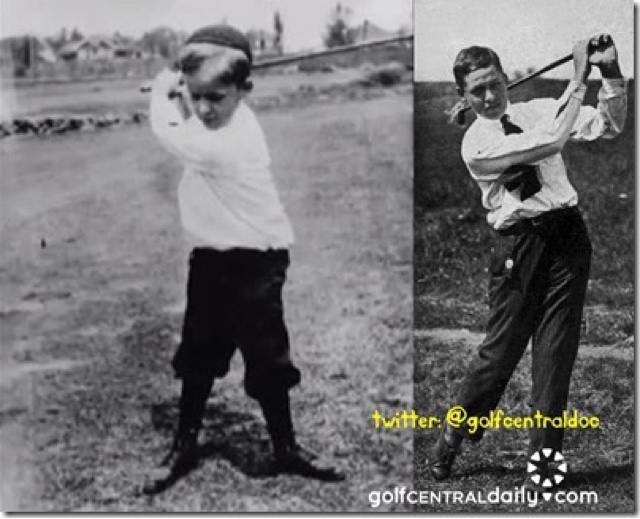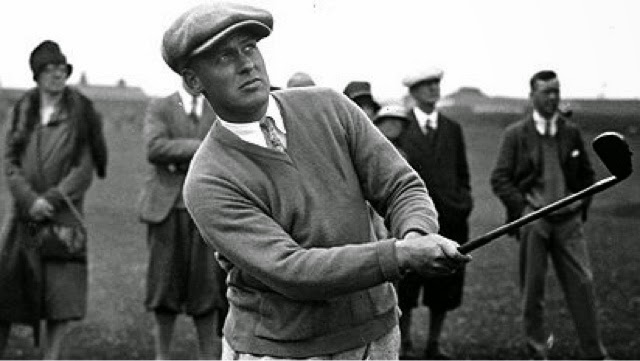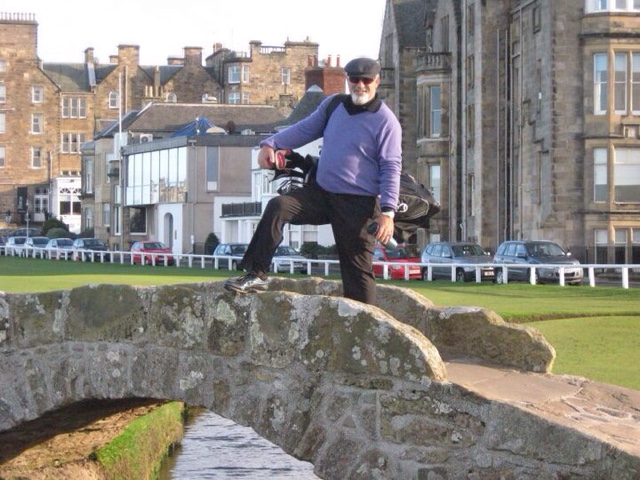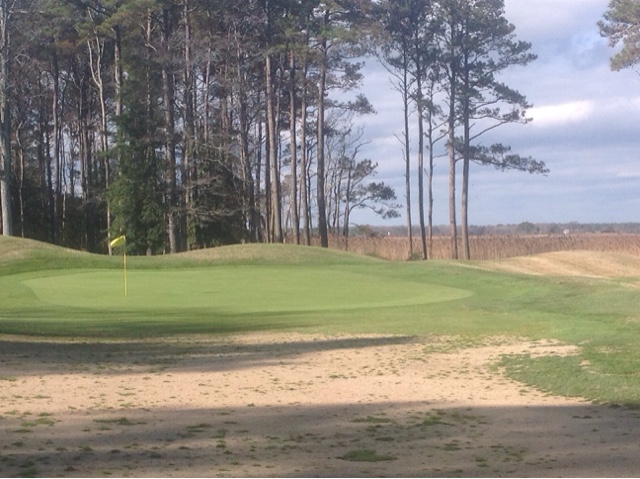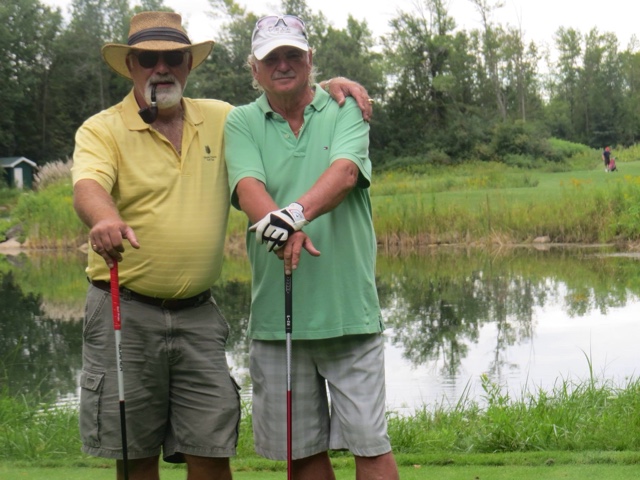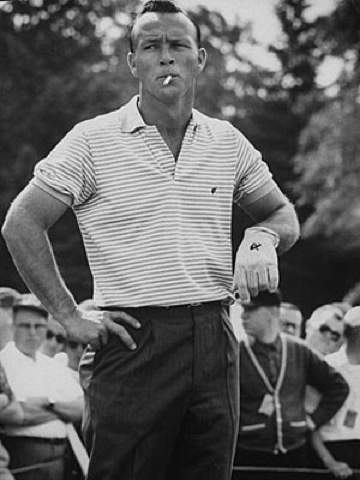Routinely, after a lousy round, Steve hits a few balls to try to figure things out. He hates to leave the course with a bad taste in his mouth. More often than not, his post-round shots are really good. And this really annoys him. I have suggested that the only explanation I can come up with is that he must be somehow being negatively affected by mental pressure. He is obviously more than capable of hitting really fine shots. I have suggested that he perhaps needs to somehow convince himself that the results don't matter when he's playing--to just hit the ball and let it go where it goes. Of course that's easy to say, but when you care about playing well, how do you detach yourself from the results?
Steve is not any different from the rest of us. We all can have our games undermined by becoming too aware of our good play just as much as by our poor play. And we can all fall victim to mental pressure. As usual, Bobby Jones wrote an exceptional piece about this in his book Bobby Jones on Golf. Under the heading Scoring, Bobby wrote:
"Why is it, someone asks, that so often after making an exceptionally good score on the first nine holes, a player apparently loses all touch with his game and comes home in astonishingly bad figures? Isn't it strange that this explosion should occur when he is in his best stride? Apparently, there is a lower limit fixed upon the score a person may turn in, and if he goes many strokes below his allotment in the early stages, it is more than likely that the closing will even the count.
Yet it is no law of averages, or anything like it, that is responsible for the levelling process. It is almost impossible to measure the force with which the awareness of a good score in the making weighs down upon the performer. The nearer he approaches his goal, the harder each shot becomes, until the meanest obstacles appear almost insurmountable. There is far less nervous strain involved in overcoming the effects of a bad start than in maintaining the standard set by a well-made beginning.
This mental pressure is responsible more than anything else for the fact that the third-round leader rarely finishes in front of an Open Championship field. What presses him down is not that he has 'shot his bolt,' as the saying is, for if the fourth round were a separate affair with everyone starting even, he could probably do as well as anyone; but the thought of the few strokes' lead he must protect makes him over fearful and over cautious. The man drawing up from the rear, on the other hand, finds himself in an aggressive state of mind, with nothing to think about except playing golf. Very often he can play himself into a winning position before has time to appreciate the import of what he is doing.
The shopworn admonition to forget the last shot and play the one in hand was meant to apply to the good ones as to the bad. It is just as important to forget the 3's as the 6's.
I have never forgotten the comment made to me several years ago by a well-known professional. We had just heard at the clubhouse that Walter Hagen had run into a phenomenal string of sub-par holes. 'You know, Bobby,' said the pro, 'the greatest thing about Hagen is that after he makes a few birdies he thinks he can keep on doing it, whereas if you or I do it, instead of continuing to play golf we begin to wonder if this isn't too good to be true. We begin to be suspicious of our good fortune and to expect a 6 or 7 to jump up any minute.'
Of course, one may say that it is easy to understand why there should be considerable mental strain in a tournament, but the same conditions do not bear upon a Saturday afternoon of golf. It is a different situation, of course, but every golfer knows what it means to beat his best score over his home course. The putt that turns the trick, is fully as momentous, for the player, as the winning stroke in any championship.
In 1916, my best score at East Lake was 74, not in competition, of course, and like anyone else, every time I went out to play I tried to beat it. I tried all summer and all the next year without success. I remember at least four occasions when I stood on the seventeenth tee needing only two pars, a 4 and a 3, not merely to beat 74, but to beat 70. Each time I arrived at that point, I began to think about what I was about to do, and each time I would use up just enough strokes to bring my total up to 74. It was two full years before I could break through the barrier raised by that 74. If I could have refrained from thinking about it, I should have probably beat it in a few months.
So the average player's difficulty in breaking 90 or 85 is no different from the expert's trouble when he tries to win a championship. When I hear a man censured for collapsing in the last round of a competition when he apparently had it won, I always want to ask the critic if he ever had three 5's to beat his best score and if he got them. Whether the score be 70 or 100 is of little moment. It's all a question of what it means."
Bobby was not a fan of calling someone a choker. He realized just how prone all of us are to being over-fearful and over-cautious when trying to put the finishing touches on an important round. We must all learn to deal with pressure, just as he did when trying to break 74 for two years at East Lake. If you needed three 5's to shoot your personal best score, would you do it? I don't know about you, but I know I wouldn't be betting the ranch on me doing it.


